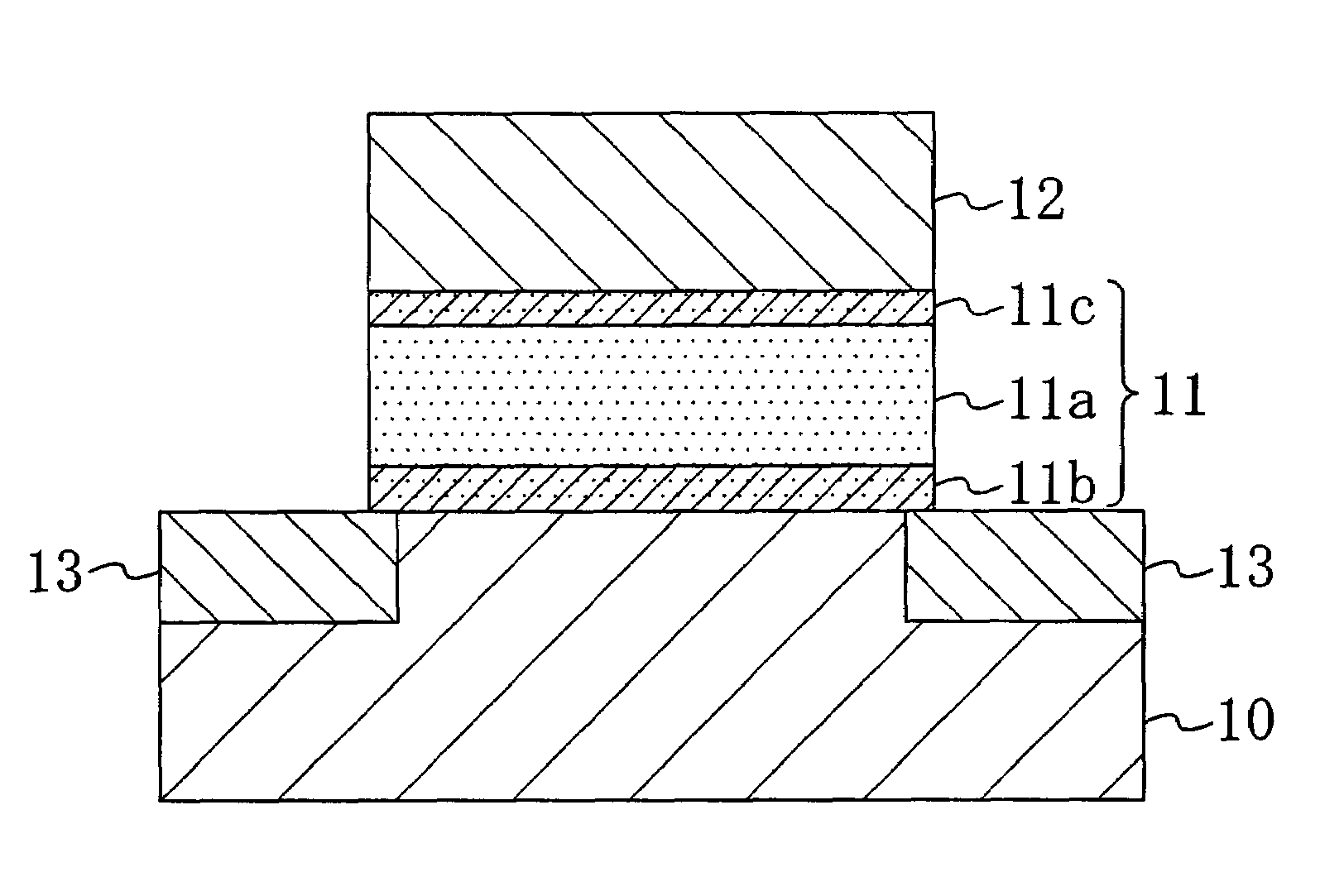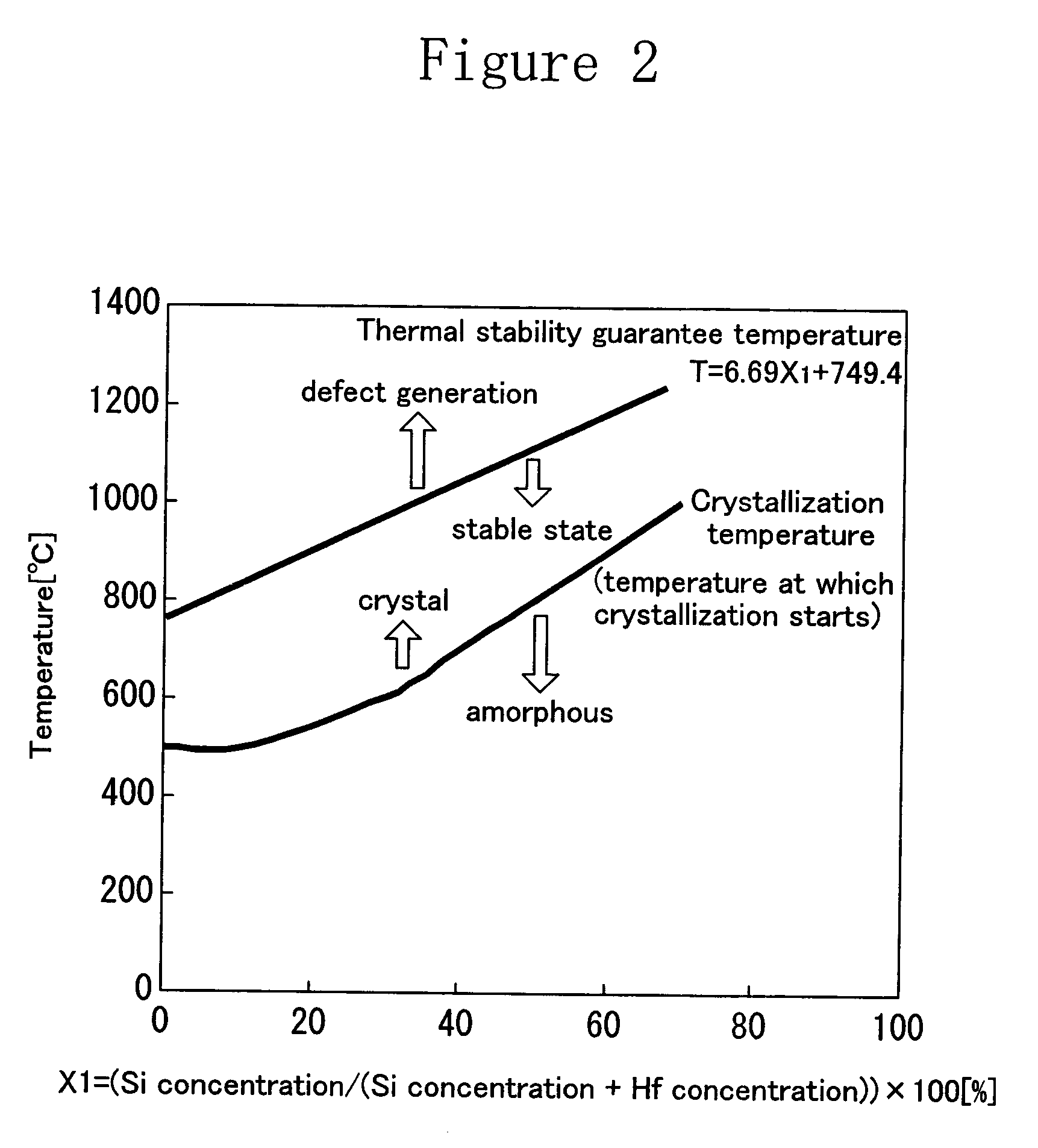Semiconductor device and method for producing the same
a technology of semiconductors and dielectric films, applied in semiconductor devices, electrical equipment, transistors, etc., can solve the problems of increasing the leak current of the gate through the resultant crystal grain boundaries or defect level, increasing the leak current of the gate, and insufficient thermal stability of the conventional high-k gate insulating film
- Summary
- Abstract
- Description
- Claims
- Application Information
AI Technical Summary
Benefits of technology
Problems solved by technology
Method used
Image
Examples
first embodiment
[0073]Hereinafter, a semiconductor device of a first embodiment of the present invention, more specifically, a MISFET will be described with reference to the accompanying drawings.
[0074]FIG. 1 shows the cross-sectional structure of a semiconductor device of a first embodiment.
[0075]As shown in FIG. 1, a gate electrode 12 is formed on a silicon substrate 10 via a gate insulating film 11. An impurity diffusion layer 13 serving as a source region or a drain region is formed on both sides of the gate electrode 12 in the silicon substrate 10. The gate insulating film 11 includes a high dielectric constant film 11a made of insulative metal oxide, a lower barrier film 11b formed below the high dielectric constant film 11a, and an upper barrier film 11c formed above the high dielectric constant film 11a.
[0076]More specifically, the high dielectric constant film 11a is formed of a substance in which silicon is contained in hafnium oxide (HfO2) having a high relative dielectric constant, tha...
second embodiment
[0107]Hereinafter, a method for producing a semiconductor device of a second embodiment of the present invention, specifically, a method for producing a MISFET will be described with reference to the accompanying drawings.
[0108]FIGS. 7A to 7C and 8A to 8C are cross-sectional views showing the processes of a method for producing a semiconductor device of the second embodiment.
[0109]First, as shown in FIG. 7A, an insulating film for isolation (not shown) is formed on a p-type silicon (100) substrate 20, and a device forming region is segmented. Then, standard RCA cleaning and diluted HF cleaning are performed with respect to the surface of the silicon substrate 20. Thereafter, a silicon nitride film (Si3N4 film) 21A having a thickness of about 0.7 nm is formed on the silicon substrate 20 with NH3 gas at a temperature of about 700° C. In this process, sufficient hydrogen is captured in the Si3N4 film 21A. The Si3N4 film 21A eventually becomes the lower barrier film 21 (see FIG. 7C).
[01...
PUM
 Login to View More
Login to View More Abstract
Description
Claims
Application Information
 Login to View More
Login to View More - R&D
- Intellectual Property
- Life Sciences
- Materials
- Tech Scout
- Unparalleled Data Quality
- Higher Quality Content
- 60% Fewer Hallucinations
Browse by: Latest US Patents, China's latest patents, Technical Efficacy Thesaurus, Application Domain, Technology Topic, Popular Technical Reports.
© 2025 PatSnap. All rights reserved.Legal|Privacy policy|Modern Slavery Act Transparency Statement|Sitemap|About US| Contact US: help@patsnap.com



